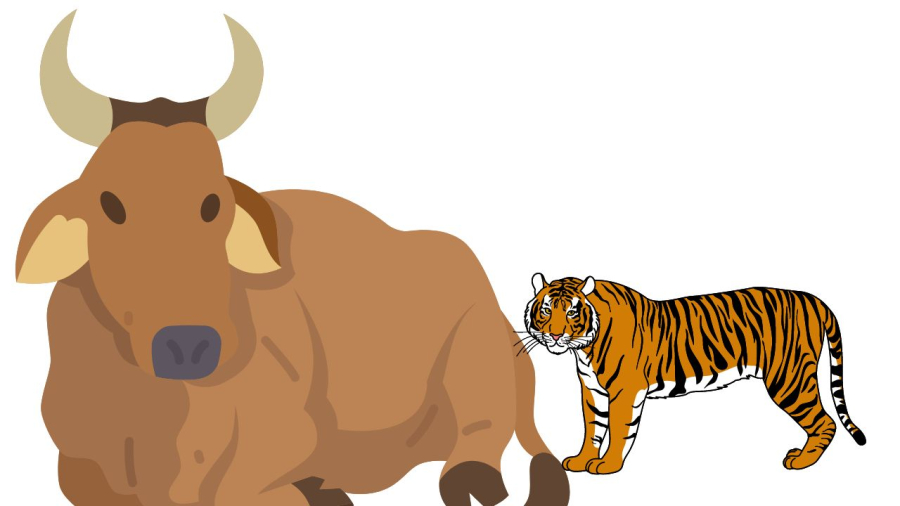Why do carnivores such as lions, tigers, and leopards tend to be smaller in size compared to herbivores like buffaloes, cows, and elephants?
Chris Carbone, a researcher at the Institute of Zoology in London, offers insight: “Mammalian carnivores are not allowed to have large bodies.” Nature dictates that smaller carnivores, weighing less than 20 kg, typically prey on rodents, insects, and birds. Larger carnivores, such as tigers and lions, hunt animals bigger than themselves.
Experiments show that larger carnivores consume more meat, and a doubling in body size results in a 1.6-fold increase in energy requirements. Consequently, carnivores generally have smaller body sizes compared to herbivores to survive in the wild.

Carnivores tend to be smaller than herbivores
Energy Conservation in Carnivores
The largest carnivores, like wolves, polar bears, and lions, face challenges in meeting their energy needs. They employ strategies such as resting and moving slowly to conserve energy. Larger animals have slower eating and digestion rates compared to smaller carnivores.
While small carnivores can increase their body size by hunting larger prey, larger predators have limited strategies to sustain their energy requirements.
Based on experiments, researchers estimate that predators cannot sustain their energy needs if their weight exceeds 1,000 kg. The largest carnivorous dinosaur, T. rex, weighed approximately the same as a 1,000 kg carnivore. Similarly, the largest modern-day mammalian carnivore, the polar bear, has not reached this weight.
In contrast, the ocean provides a richer food source, allowing for the existence of larger carnivorous marine creatures like whales and killer whales.
The energy conservation strategy of large land carnivores makes them more vulnerable to changes in their environment or climate. According to John Gittleman, an ecologist at the University of Georgia, this may explain why the largest land-based carnivores that ever lived are now extinct. Meanwhile, the abundant food supply in the ocean has allowed for the survival of massive carnivorous fish species.
Today, moderately sized land carnivores still exist but are less numerous and unable to increase their numbers compared to herbivores.
How to Use an Iron for Energy Savings
 Energy Savings’>
Energy Savings’>Are you looking to reduce your electricity bills? One of the most effective ways to do so is to carefully manage your iron usage. Irons can consume a surprisingly large amount of electricity due to their impressive heat and power output. To ensure your energy bills are kept under control, take a look at these iron usage guidelines from DienmayXANH.com.
Is it Necessary to Unplug Your Microwave After Use?
“Should you keep your microwave plugged in at all times, or unplug it after each use? This is a question that many people ponder, curious about potential electricity costs. Well, wonder no more, as we’re here to provide a clear and concise answer, shedding light on the mysteries of your microwave’s power consumption.”





































